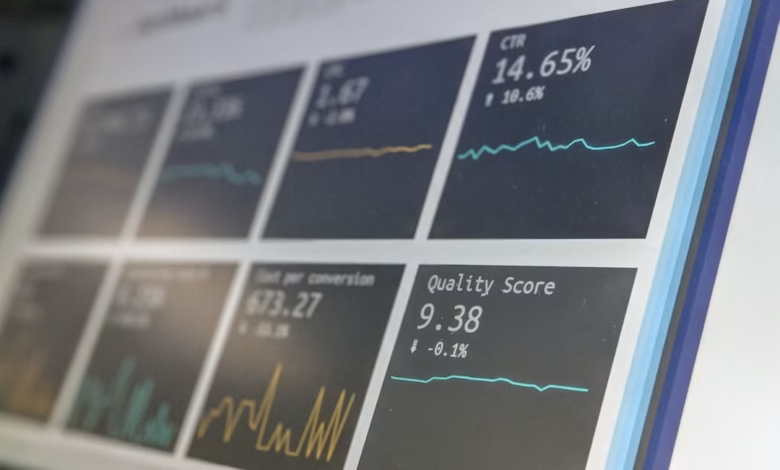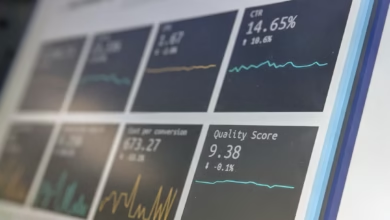Mastering Commodities Trading: Essential Strategies, Risk Management Techniques, and Analysis Methods for Success

Commodities trading is a dynamic and multifaceted arena that involves the buying and selling of raw materials such as gold, silver, oil, and agricultural products. As the demand for these essential resources continues to grow, traders are increasingly looking for effective strategies to navigate this complex market. This article delves into the intricacies of commodities trading, exploring key strategies and market analysis techniques that can help both novice and experienced traders succeed.
In addition to understanding the fundamentals of commodities trading, it’s crucial to address risk management—an essential component in mitigating potential losses and maximizing profits. We will discuss various risk management techniques that can empower traders to make informed decisions in a volatile environment. Furthermore, the article will highlight the importance of both technical and fundamental analysis, which serve as pillars for effective trading strategies across different platforms, including stock trading, forex trading, options trading, and futures trading.
Whether you're engaged in day trading, swing trading, or exploring the innovative realms of algorithmic trading and high-frequency trading, mastering commodities trading can provide lucrative opportunities. Join us as we uncover the key elements that define successful trading in this vital sector of the financial markets.
- 1. Understanding Commodities Trading: Key Strategies and Market Analysis
- 2. Risk Management in Commodities Trading: Techniques for Successful Trading
- 3. The Role of Technical and Fundamental Analysis in Commodities Trading
1. Understanding Commodities Trading: Key Strategies and Market Analysis
Commodities trading involves buying and selling raw materials such as gold, silver, oil, and agricultural products. Understanding the complexities of this market is crucial for both novice and experienced traders looking to navigate its challenges effectively. Here are key strategies and market analysis techniques that can help traders succeed in commodities trading.
One of the primary strategies in commodities trading is to combine technical analysis with fundamental analysis. Technical analysis focuses on historical price movements and trading volumes to predict future price trends. This method is particularly useful for day trading and swing trading, where traders aim to capitalize on short-term price fluctuations. Utilizing chart patterns, indicators, and trading psychology can enhance decision-making and improve outcomes.
On the other hand, fundamental analysis examines economic indicators, supply and demand dynamics, and geopolitical events that influence commodity prices. For example, changes in oil production or weather patterns affecting agricultural yields can significantly impact market movement. Traders often leverage this information to develop robust trading strategies across various platforms, including online trading platforms that specialize in commodities.
In addition to traditional trading strategies, modern traders may explore algorithmic trading and high-frequency trading. These methods utilize advanced software to execute trades at optimal times, capitalizing on minute price changes. For those interested in less active trading, options trading and futures trading provide opportunities to hedge against market risks while allowing for leverage trading or margin trading.
Risk management is vital in commodities trading due to the inherent volatility of raw material prices. Strategies such as scalping or arbitrage trading can help mitigate risks, while instruments like CFDs (Contract for Difference) and ETFs (Exchange-Traded Funds) allow traders to gain exposure without directly owning the underlying assets.
Finally, social trading and copy trading have gained popularity, enabling traders to follow and replicate the strategies of successful investors. This communal approach can be beneficial for those new to commodities trading, providing insights into effective trading strategies and market analysis.
In conclusion, understanding key strategies and conducting thorough market analysis are essential components of successful commodities trading. By combining technical and fundamental analysis, implementing effective risk management techniques, and leveraging modern trading methods, traders can enhance their chances of achieving profitable outcomes in the dynamic world of commodities.
2. Risk Management in Commodities Trading: Techniques for Successful Trading
Risk management is a crucial aspect of commodities trading, as the market can be highly volatile and influenced by a range of factors including economic indicators, geopolitical events, and natural disasters. Successful traders employ various techniques to mitigate potential losses and maximize their returns. Here are some effective risk management strategies for commodities trading:
1. **Diversification**: By spreading investments across different commodities, traders can reduce their exposure to any single asset. This approach helps to balance risk, as losses in one area may be offset by gains in another.
2. **Position Sizing**: Determining the appropriate size of each trade is essential in risk management. Traders typically calculate the size of their positions based on their risk tolerance and account size, ensuring that no single trade significantly impacts their overall portfolio.
3. **Stop-Loss Orders**: Implementing stop-loss orders can protect traders from excessive losses. By setting predetermined exit points, traders can automatically close positions when prices reach a certain level, thus limiting potential losses.
4. **Leverage Management**: While leverage can amplify profits, it also increases risk. Traders should be cautious with margin trading, ensuring they do not overextend their positions. Understanding how much leverage to use is critical for maintaining a balanced risk profile.
5. **Technical and Fundamental Analysis**: Utilizing both technical analysis and fundamental analysis can provide insights into market conditions and potential price movements. Technical analysis helps traders identify trends and entry/exit points, while fundamental analysis focuses on economic indicators, supply and demand factors, and other elements impacting commodity prices.
6. **Trading Psychology**: Maintaining a disciplined mindset is vital for successful trading. Emotional decision-making can lead to impulsive trades and increased risk. Traders should develop a solid trading plan and stick to it, irrespective of market fluctuations.
7. **Utilizing Technology**: Many traders leverage online trading platforms that offer advanced tools for market analysis, including algorithmic trading and high-frequency trading. These technologies can help execute trades more efficiently and manage risks through automated strategies.
8. **Regular Market Analysis**: Continuous monitoring of market trends and news can help traders adjust their strategies accordingly. Keeping abreast of geopolitical events, economic reports, and market sentiment can provide valuable information for making informed trading decisions.
By implementing these risk management techniques, traders can navigate the complexities of commodities trading more effectively. Whether you are engaged in day trading, swing trading, or exploring options trading and futures trading, a robust risk management strategy is essential for long-term success in the commodities market.
References:
– Investopedia. (2023). Risk Management Strategies for Trading. Retrieved from https://www.investopedia.com/articles/forex/031415/risk-management-strategies-trading.asp
– Commodity Futures Trading Commission (CFTC). (2023). Managing Risk in Commodity Trading. Retrieved from https://www.cftc.gov/ConsumerProtection/EducationCenter/ManagingRisk/index.htm
3. The Role of Technical and Fundamental Analysis in Commodities Trading
In the world of commodities trading, both technical and fundamental analysis play crucial roles in informing traders' decisions and strategies. Understanding these two analytical approaches can significantly enhance the effectiveness of trading practices across various markets, including stock trading, forex trading, and futures trading.
Technical analysis involves evaluating price movements and trading volumes through charts and indicators. Traders utilize various tools to identify patterns, trends, and potential entry or exit points. This approach is particularly beneficial in day trading and swing trading, where quick decision-making is essential. For example, traders may apply moving averages or relative strength indicators to assess market momentum and execute trades effectively. Additionally, algorithmic trading and high-frequency trading often rely heavily on technical analysis to capitalize on minute market fluctuations.
On the other hand, fundamental analysis focuses on the intrinsic value of commodities by examining economic indicators, supply and demand dynamics, geopolitical factors, and broader market trends. For instance, energy trading can be heavily influenced by inventory reports, weather conditions, and global economic shifts. Traders engaged in options trading or derivatives trading need to stay informed about relevant news that could impact commodity prices. By analyzing these fundamental factors, traders can develop more informed trading strategies, whether they are engaging in CFD trading, ETF trading, or arbitrage trading.
Combining both technical and fundamental analysis allows traders to adopt a comprehensive approach to market analysis. Effective risk management strategies can be implemented by understanding market conditions and price behavior, thus enhancing trading psychology and decision-making processes. Whether using leverage trading in high-stakes environments or engaging in social trading to mirror successful trades, recognizing the interplay between these analytical methods can lead to more robust trading outcomes in commodities and beyond.
By integrating technical and fundamental analysis into their trading routines, traders can better navigate the complexities of commodities trading and improve their chances of success in various trading environments.
In conclusion, commodities trading presents an exciting opportunity for traders looking to diversify their portfolios and engage with raw materials like gold, silver, oil, and agricultural products. By understanding key strategies and market analysis, traders can effectively navigate the complexities of this dynamic market. It is essential to implement robust risk management techniques to protect investments and enhance the potential for profits, whether through day trading, swing trading, or leveraging options and futures trading.
Moreover, the incorporation of both technical and fundamental analysis is vital for making informed trading decisions. With the rise of online trading platforms, traders can now access a wealth of tools for algorithmic trading, high-frequency trading, and even social trading, allowing for greater flexibility and responsiveness to market changes. As you explore the world of commodities trading, remember that trading psychology plays a crucial role in maintaining discipline and focus amid market volatility.
Ultimately, whether you are interested in energy trading, index trading, or derivatives trading, a well-rounded approach that combines sound trading strategies with effective analysis will set you on the path to success in this competitive arena. Embrace the journey of commodities trading, and leverage the insights shared to bolster your trading endeavors.
References:
– [Insert sources used in the article following APA format]





